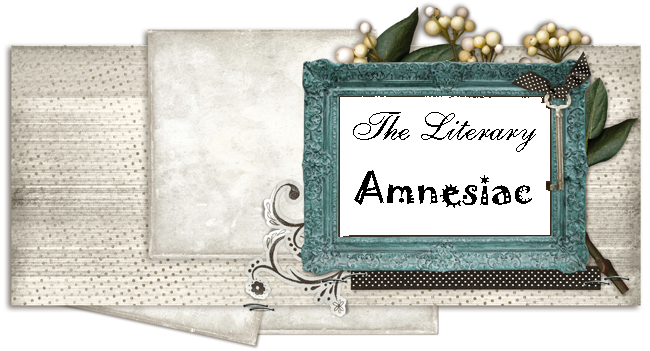
I can't remember where I first heard about this book, but I do recall that it was introduced to me as erotica. I've long been curious about Victorian erotic novels. The phrase sounded like an oxymoron to me. I didn't know if I should expect something like the movie Nine 1/2 Weeks (which is something I would consider erotica), or if the era kept even scandalous literature much more tame than that. I was pretty confident that, given the publication date of 1907, it wouldn't be completely pornographic.
More than once while reading, I thought how this book reminded me of the Twilight Saga (without the vampires, of course). The two stories had much in common: obsession, "fade to black" love scenes, gut-wrenching heartbreak, an all-consuming reunion (or so I thought), and even a kid. I couldn't help but wonder if Stephenie Meyer has ever read Three Weeks.
Of course I don't have any way of knowing whether this book is typical of Victorian erotic fiction, but this one left everything up to the imagination. Not that this is a bad thing. Reading explicit love scenes kind of embarrasses me, as if someone is going to sneak up behind me, read over my shoulder, and be shocked.
More than once while reading, I thought how this book reminded me of the Twilight Saga (without the vampires, of course). The two stories had much in common: obsession, "fade to black" love scenes, gut-wrenching heartbreak, an all-consuming reunion (or so I thought), and even a kid. I couldn't help but wonder if Stephenie Meyer has ever read Three Weeks.
I didn't sink into this book like I did with Twilight, though. I found myself doubting the "consuming emotion" between Paul and his queen. They convinced themselves that theirs was a love like none other, but I didn't see much evidence to prove it wasn't merely lust.
At least the writing wasn't completely gag-inducing. It wasn't so bad that I would call it a precursor to the modern romance novel. Take the following excerpt, for example. The first bit might have started my eyes rolling, but the cuckoo counteracted that.
I'm including a portrait of the author here, which I found while reading about her online. Isn't this a beautiful photo?
"Good-bye, darling," he whispered with a suspicion of tremble in his charming voice. "I shall never love any woman but you--never, never in my life."
Cuckoo! screamed the bird in the tree.
Then there's the cover. I probably examined it much more closely than the publisher intended, but other than the fact that there is snow in the photograph and the two lovers met in the Swiss Alps (where I assume there was some snow, even in May), the cover art, while striking, doesn't seem to apply to the story. That cathedral in the fog has no meaning for the book (unless we see it as a castle and decide that's where the queen probably lived), but even more inexplicable is the man who has discarded his crutches and is propped against the snow-covered rock at the foot of a statue of Christ on the cross which is nestled among the trees. I probably wasn't supposed to notice all of that.
**UPDATE**
The cover art is Caspar David Friedrich's painting entitled Winter Landscape, possibly from 1811, which can be found in the National Gallery in London. Today I noticed that Art.com was recommending that I buy a print of this painting! Funny coincidence or scary example of how invasive the internet is when trying to convince people to spend money??
**UPDATE**
The cover art is Caspar David Friedrich's painting entitled Winter Landscape, possibly from 1811, which can be found in the National Gallery in London. Today I noticed that Art.com was recommending that I buy a print of this painting! Funny coincidence or scary example of how invasive the internet is when trying to convince people to spend money??


No comments:
Post a Comment
"Ah, good conversation--there's nothing like it, is there? The air of ideas is the only air worth breathing." --M. Rivière to Newland Archer, The Age of Innocence